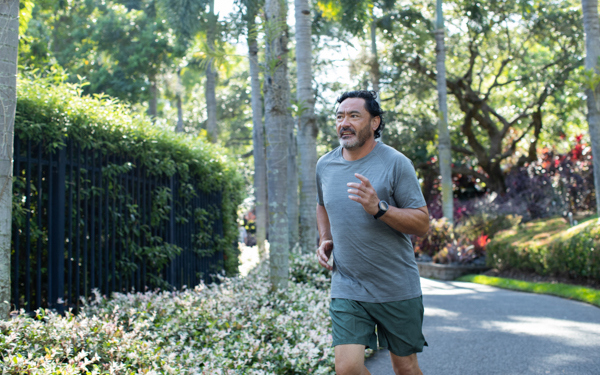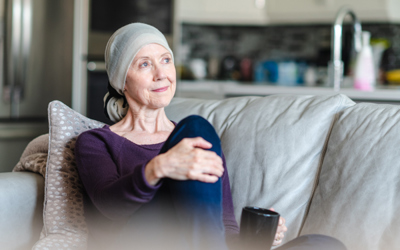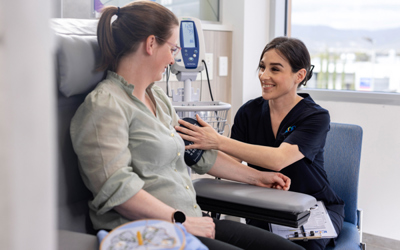The role that fitness plays throughout cancer treatment
Being physically fit and exercising has many benefits for people with cancer, both during treatment as well as recovery.
Being physically active during treatment can help reduce side-effects such as; anxiety, depression, tiredness, nausea and poor appetite.
During recovery, exercise also offers a range of health benefits including improved cardiovascular health, as well as reducing the risk for development of type 2 diabetes, osteoporosis as well as offering a protective effect of cancer recurrence.
Exercise recommendations during and after cancer treatment
According to the Clinical Oncology Society of Australia (COSA), it is recommended that you participate in regular physical activity as soon as possible following your diagnosis (as your health allows).
COSA exercise recommendations include both aerobic and resistance-based exercises:
At least 150 minutes of moderate-intensity exercise or 75 minutes of high-intensity exercise per week – such as jogging, swimming or cycling.
Two to three sessions of moderate or high-intensity resistance exercise –such as lifting weights, and these sessions should target all of your major muscle groups.
It is important that you speak to a specialist, such as an accredited physiotherapist or physiologist so that your exercise program can be tailored to your current level of fitness, whilst accommodating for your type of cancer treatment and prognosis.
Benefits of exercising during cancer treatment
Your exercise program and goals during your cancer treatment will be based on a number of things including your type of cancer, treatment and potential side-effects, as well as your current fitness level. Engaging in an exercise and fitness program that is tailored to your individual needs will provide many benefits including;
Management of stress, anxiety and depressive symptoms associated with cancer and treatment.
Improves muscle strength
Reduces tiredness and fatigue
May promote hunger if you are experiencing poor appetite or nausea
Reduces the risk of thrombosis (blood clots) in your legs by improving blood flow
Increases your feelings of self-worth and improves quality of life
Flexibility exercises improve range of motion, which can be reduced with some cancer treatments.
Starting an exercise program early on in treatment can reduce the risk of developing, or reduce the effects of lymphoedema (swelling in parts of the body due to damage to the lymphatic system from some cancer treatments).
When recovering from cancer, side-effects from treatment typically ease after a few weeks of treatment finishing, although it can take longer for some people. Over time, you should be able to gently increase your exercise and intensity to obtain maximum benefits including:
Weight maintenance and muscle strength
Increased cardiovascular health
Improved emotional wellbeing
Increased social interaction and connect
Increased energy levels
Offers a protective effect over cancer recurring
Frequently asked questions
References
The content on the Icon Cancer Centre website is for informational purposes only and should not be considered medical advice. It is not a substitute for consultation with a qualified medical practitioner. For personalised medical guidance, please consult with your GP or another qualified healthcare provider.






